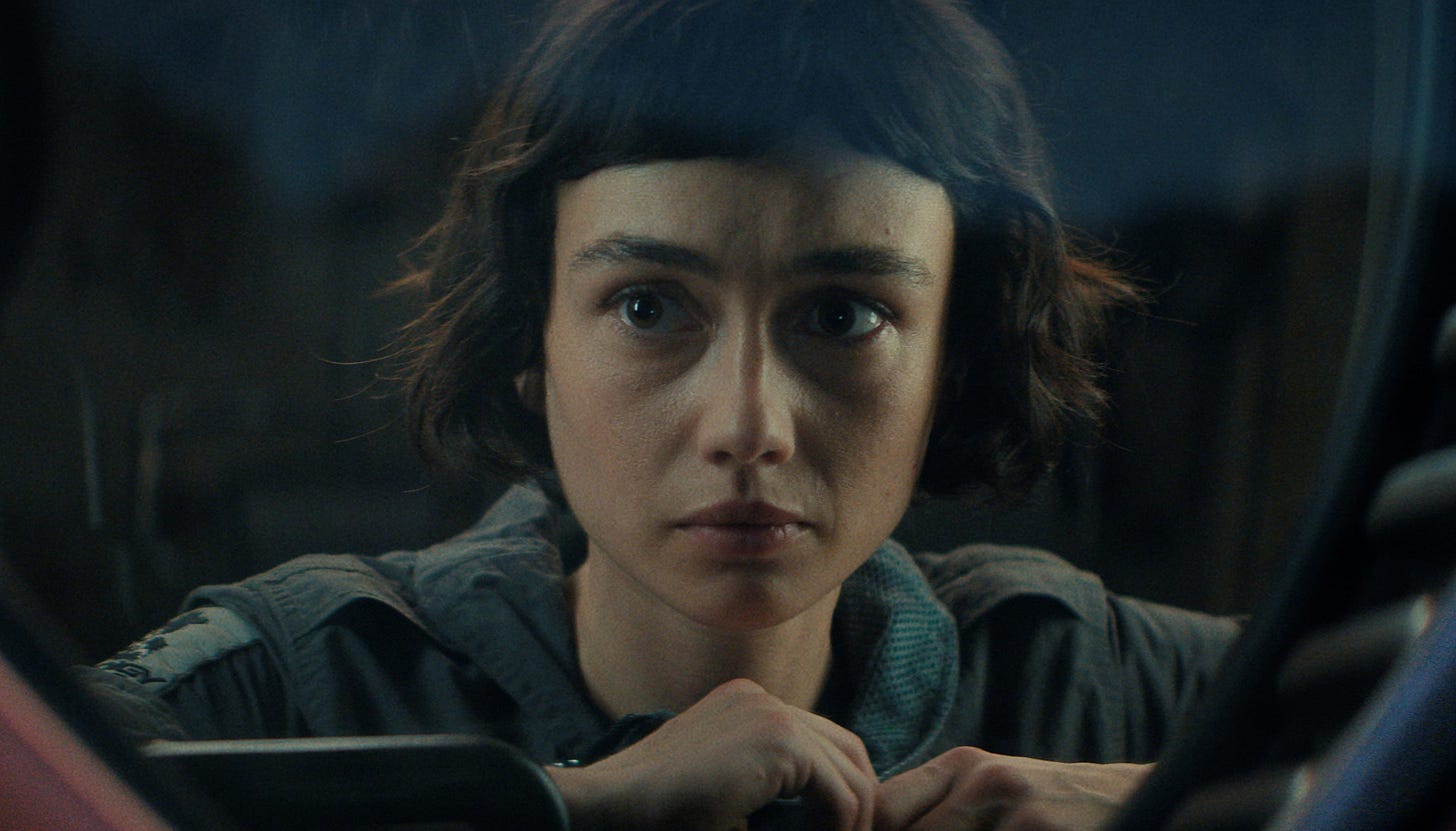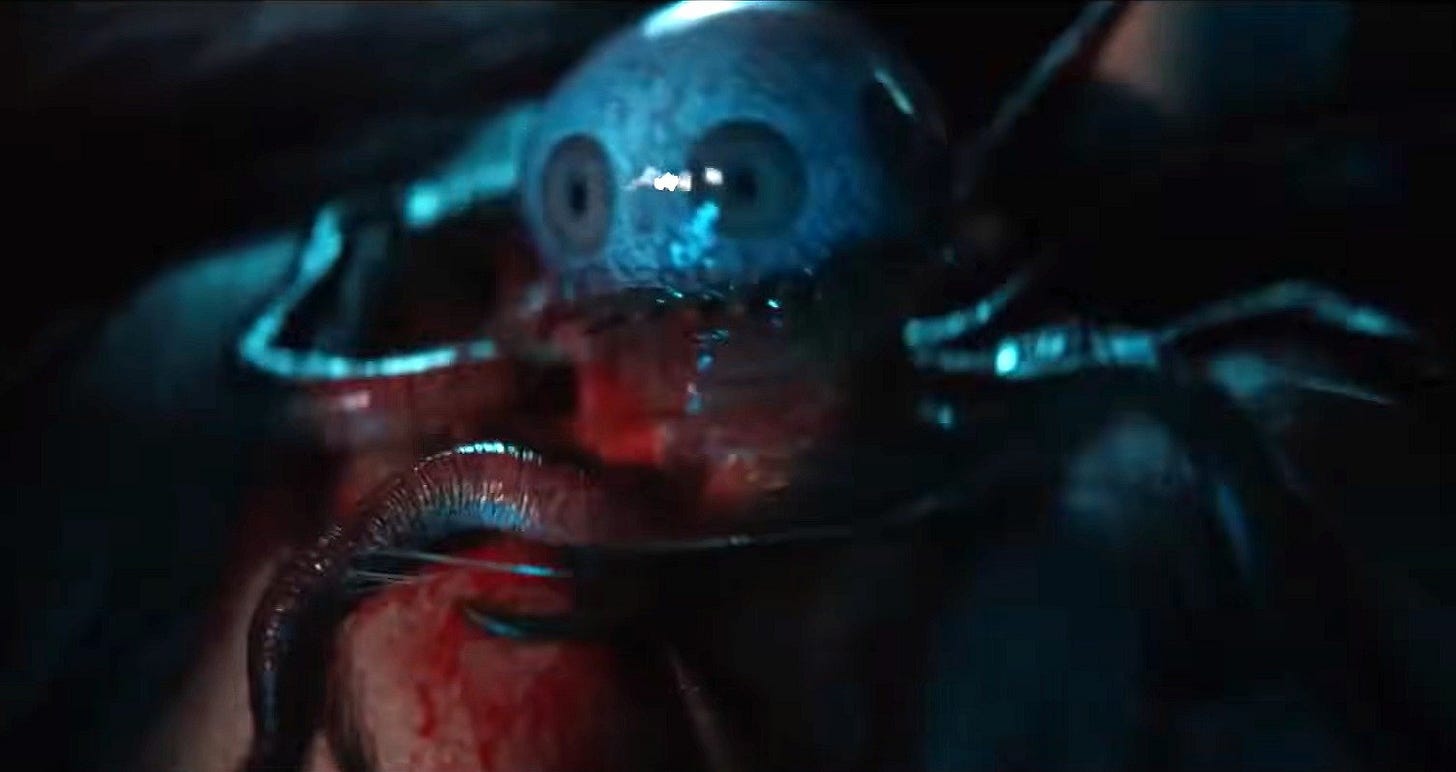‘Alien: Earth’: Sometimes the Lore Doesn’t Need Expanding
Sometimes the only way to refresh an existing universe is to add to it. Sometimes adding to an existing universe leaves you with Alien: Earth
NEW STANDARD DISCLAIMER: This newsletter aggressively spoils things.
Alien arrived in 1979 as a nearly perfect film1. It’s influence and impact is so vast we’re still dealing with the aftermath, and a lot of that aftermath has been decidedly mediocre2. After a smashing sequel, Aliens, that reset and recalibrated the universe in smart ways, the track record for this franchise has been mixed. And yet it’s an unkillable IP, in large part because of the perfection of that original film3.
Noah Hawley has been doing some great work playing around in the Fargo universe, finding a perfect balance between honoring the original film’s tone and rules while expanding into different stories and flavors. When I heard Hawley was working on a television adaptation set in the Alien universe, I was pretty stoked. If he brought half the slick, steady work he’s done on Fargo to Alien, it would have a great chance of being interesting. And the xenomorphs of the Alien universe were always destined to eventually arrive on Earth4.
And yet, Alien: Earth is ... not great5. You may see glowing reviews for this series, and you can choose to believe them6, but the first two episodes of this series were dispiriting. I realized toward the end of the second episode the Why of it’s failure: Hawley has some good ideas to expand the Alien universe, but the Alien universe shouldn’t be expanded. It works because it is small, tight, and utterly focused on putting people in tight spots where they can be impregnated or eaten7.
I For One Welcome Our New Robot Overlords
A good example of what I’m talking about concerns the series’ additions to the Alien universe’s stock of artificial people8. In the main line of the universe, there have always been “synthetics,” androids that mimic humans almost perfectly while having superior strength and computer-speed thought processes (plus the ability to interface directly with traditional computer systems). These synthetics have been villains and heroes, but they’ve been pretty consistent.
Hawley decides to expand on this by imagining that there are also cyborgs and “hybrids” in the Alien universe. The hybrids are essentially synthetics with human consciousness downloaded into them. This presents two basic problems: One, Alien: Earth is set just two years before the original Alien film9, and yet at no point in any of the prior art made in this universe is there mention of either cyborgs or hybrids. It’s true that Alien was set on a ship still very far out from Earth, and it takes Sigourney Weaver’s Ripley 57 years to get back to Earth. But there’s no mention of them in Aliens, either, which takes place 59 years after Alien: Earth10.
Does that also make us wonder why no one believes the xenomorphs are real in Aliens? Let it drift.
Was this a necessary or useful addition? Probably not. But what really makes it awful is that the hybrids have children’s consciousnesses. It makes sense that children with terminal illnesses would be candidates for a radical and untested procedure to dump their brains into synthetic bodies. It does not make sense that these kids—blessed with super strength and other abilities while sporting the emotional maturity of, well, children11—would then be dispatched into any kind of emergency situation, even if the presence of a few horrifying aliens isn’t known. The fact that the actors actually present with childlike behaviors just makes it all very, very wonky, and it adds a kind of lighthearted camp to a universe previously defined by, you know, people being impregnated and eaten by an alien that looks like something H.R. Giger would come up with12.
Mr. October
The second way Hawley expands the Alien universe is to bring in, yanno, more aliens—different aliens. It’s true that Ridley Scott and writers Jon Spaihts and Damon Lindelof offered up variants on the xenomorph in the weird, messy Prometheus, but these were presented as evolutionary stages of the same creature as it was shaped via rapid genetic mutation and circumstance13 into what we know and love today as the alien in Alien. Hawley imagines that a few years before the Nostromo was forced by company edict to retrieve a sample of the xenomorph, a ship owned by a different corporation was out there bringing back not just the xenomorph, but a few other baddies as well.
On the one hand, this makes sense in the established universe. If one corporation is willing to chance extinction in order to extract value from an unstoppable killing machine, so would others14. And if one ship was on the verge of returning to earth with some baby xenomorphs incubating in people’s stomachs, why not two?
The problem is that a universe absolutely teeming with killer aliens of various stripes is actually less scary. What makes the classic Alien xenomorph so effective is its nightmarish uniqueness. The humans who encounter it in previous installments are always woefully, pitiably unprepared for it because they have had no reason to be prepared. But if blood-sucking, eyeball-eating aliens are all over the place, it kind of makes the alien just one of many threats, and it is, as a result, diminished15. Once again, expanding the universe just makes it less interesting, less effective, and more generic16.
Maybe that’s the goal. This is also yet another sci-fi universe where it’s imagined that Future People will be obsessed with pop culture circa the 20th century, after all, with folks obsessing over Reggie Jackson (!) and Disney cartoons (possibly because Disney owns this shit, but who am I to be so cynical?) as if a century of newer entries into the canon never happened. Lord knows we’re all still bopping to songs and sporting events that came out in 1870, right? So maybe the whole goal is to turn down the heat and make the Alien universe more welcoming, more general, and thus, more profitable. Sometimes that’s better than thinking that the writing is just bad17.
Then again, Jeff has created exactly zero entertainments that have become perennial fixtures in the popular culture, so what does he know? Not much. But according to stuff like this I’ve got, like, centuries to go before the world might discover my work and decide I’m the biggest thing in 2255 or something.
NEXT WEEK: Eenie Meanie tells a lot and has a suspicious lack of car chases.
If you enjoy this newsletter, consider subscribing to my paid fiction Substack, Writing Without Rules: From the Notebook!
Just like me! Except a perfect little boy, not a film. I don’t think.
Such is the power of Fury Road that I can never see this word without hearing Immortan Joe in my head.
Then again, in a reality where we just had a new Naked Gun movie, is there any IP that isn’t essentially an unkillable zombie at this point?
I think I’ve been hearing rumors of xenomorphs on Earth since late 1979 or so.
Is “Not Great” the title of my memoir? SHUT UP.
I can’t be the only person who now assumes good reviews are basically synergistic corporate chicanery, right? Clearly this newsletter is the only source of truth.
I choose eaten.
Side note: I am increasingly convinced all of you are synthetics. Prove me wrong by sending me cash and tiny bottle of liquor. Challenge: Issued.
For a universe apparently teeming with xenomorphs, there’s not a lot of xenomorph awareness. In the real world, someone sees a rat in pizzeria in New York City and it’s literally national news.
LAWYERED.
They’re like me at age 14 when I got into my father’s liquor supply. I WAS INVINCIBLE!
Which is funny, but a different kind of funny. Not, you know, funny ha-ha.
Just like how I evolved rapidly when I discovered alcohol and video games.
Corporations will kill us all, amiright?
Sort of like when you realize that I’m just one of many, many middle-aged white dudes who like whiskey and use the word dude unironically.
This also describes my arc as I grow older.
Disney will ruin everything, just give it time.





Not to be THAT GUY, but the ship in Alien was owned by Weyland Yutani. The ship with the xenomorph onboard in Alien: Earth is also a WY ship. It just ends up crashing in a territory belonging to another megacorp (Prodigy), which scoops up the specimens.
Nitpicking aside, I'm curious to see where Hawley is going with all this and what his endgame is with the Peter Pan analogy. I agree that it doesn't make any sense why Boy Kavalier (lol) would send his valuable prototypes on a rescue op, but sometimes Hawley keeps his cards close to the vest.
If you want a better example of someone doing something new and interesting with the franchise, check out the novel Alien: Phalanx. Unlike most of the stuff we've seen since Aliens (and the superb game Alien Isolation), it actually manages to make the monsters scary again, by placing them in a situation where the humans are even more helpless than before.
“Disney will ruin everything, just give it time.” 🎯